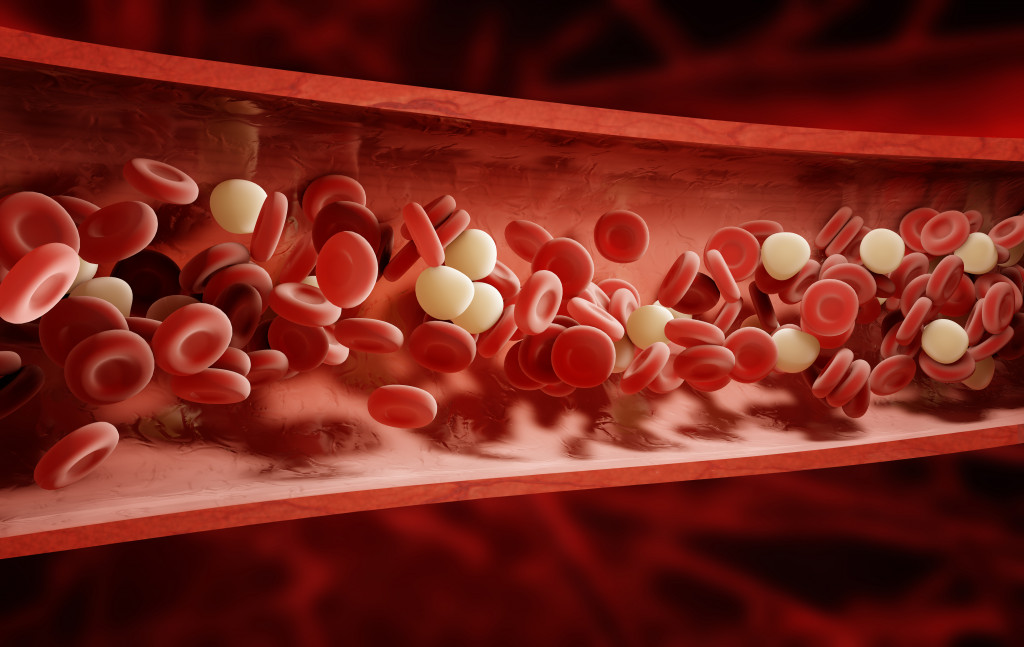- Common circulatory disorders include hypertension, coronary artery disease, heart failure, peripheral artery disease, and deep vein thrombosis.
- Lifestyle factors significantly influence the risk of these diseases, including diet, exercise, stress, and habits like smoking.
- Regular massages, moderate exercise, a balanced diet, and effective stress management can all contribute to preventing circulatory diseases.
- Despite the severity of these diseases, proper knowledge, care, and lifestyle modifications can significantly reduce the associated risks.
Circulatory diseases affect millions of people worldwide and are one of the leading causes of death globally. These diseases affect the heart and blood vessels, which means they can tremendously affect every body part. Several factors, such as genetics, lifestyle choices, and environmental factors, can cause them. Here’s what you need to know about your circulatory system, its diseases, and how to deal with it.
The Human Circulatory System
The human circulatory system pumps oxygenated blood through the body to provide energy and nutrients. It consists of the heart, arteries, veins, and capillaries. The heart pumps blood to the lungs and other organs. Arteries carry oxygenated blood away from the heart to fuel cells throughout our bodies. Veins return deoxygenated blood from the body to the heart. Lastly, capillaries are tiny vessels that connect arteries and veins, allowing for exchanging oxygen and other nutrients between our bodies and our environment.
Types of Circulatory Diseases
There are many different types of circulatory diseases. Here are some of the most common:

1. Hypertension
Hypertension or high blood pressure is one of the most common circulatory diseases affecting men and women equally. It can lead to heart attack, stroke, kidney damage, and other serious health complications. The causes of hypertension can vary from person to person and include factors such as stress, obesity, smoking, and alcohol consumption. To prevent or manage hypertension, it is best to consume a healthy diet, exercise regularly, and avoid smoking and alcohol consumption.
2. Coronary Artery Disease
Coronary artery disease occurs when the arteries that supply blood to the heart become blocked with fatty deposits. This can lead to chest pain, heart attack, and even death. The disease can be caused by high cholesterol, smoking, diabetes, and a sedentary lifestyle. To reduce the risk of developing coronary artery disease, it is essential to maintain a healthy weight, quit smoking, consume a healthy diet, and be physically active.
3. Heart Failure
Heart failure happens when the heart can no longer pump blood as effectively as it should. This disease can be caused by high blood pressure, coronary artery disease, and valve disorders. Symptoms can range from shortness of breath, tiredness, and swelling of the legs and feet. To prevent heart failure, you should follow a healthy lifestyle, manage high blood pressure and diabetes, and quit smoking if you are a smoker.
4. Peripheral Artery Disease
Peripheral artery disease occurs when the blood vessels supply blood to the limbs become narrowed. People with this condition can suffer from pain, tingling, and numbness in the legs and feet. This condition is often associated with other underlying health problems such as diabetes, high blood pressure, and high cholesterol. To prevent peripheral artery disease, it is essential to maintain a healthy lifestyle and manage underlying health conditions.
5. Deep Vein Thrombosis
DVT happens when a blood clot forms in a vein, usually in the legs. If left untreated, this condition can lead to serious health complications such as pulmonary embolism. Factors predisposing someone to develop DVT include obesity, prolonged sitting, and injury to a vein. It is essential to exercise regularly, maintain a healthy weight, and manage underlying health conditions to prevent this condition.
Preventing Circulatory System Diseases
There are some general ways you can prevent these diseases. Here are four effective ways:

Massages
A good massage can get your circulatory system working efficiently and can aid in reducing stress. Regular massages improve blood flow, reduce the risk of heart disease, and ease pain. Contact your local massage therapist and inquire about their services. You can communicate with them about your preferences and needs, and they can help you decide which type of massage is best for your situation.
Exercise
Exercise is an essential part of preventing circulatory diseases. Regular exercise helps to strengthen muscles, increase blood flow, and improve circulation. It can also reduce stress levels, improve sleep quality, and boost overall health. Aim to get at least 30 minutes of moderate-intensity physical activity each day.
Healthy Diet
A healthy diet is also essential in preventing circulatory diseases. Consume a balanced and varied diet with plenty of fruits, vegetables, whole grains, and lean proteins. Limiting processed foods and eating more plant-based meals can help reduce your risk for high cholesterol and hypertension.
Stress Management
Stress can be one of the major contributing factors to circulatory diseases. Finding effective ways to manage stress is critical to preventing these diseases. Some techniques you can use include yoga, meditation, breathing exercises, and spending time outdoors. Talk to your doctor about ways to reduce stress in your life to improve your overall health.
Circulatory diseases can have profound implications, but with the proper knowledge and precautions, you can reduce your risk of developing them. Stay informed about your circulatory system and take steps towards a healthier lifestyle. Always consult your doctor if you are experiencing any symptoms or concerns about your heart’s health. With the proper care and lifestyle changes, you can reduce your risk of developing circulatory diseases.





